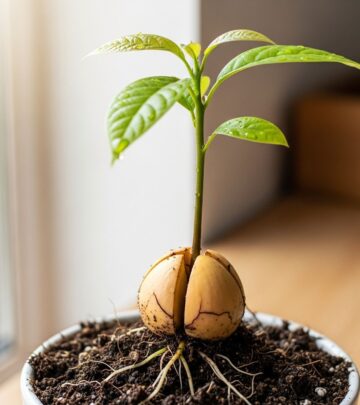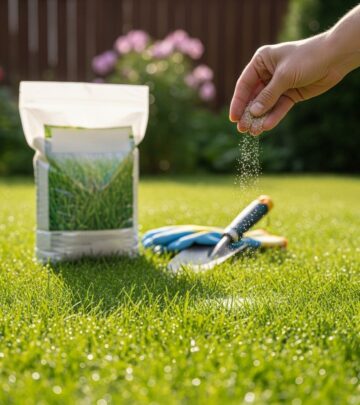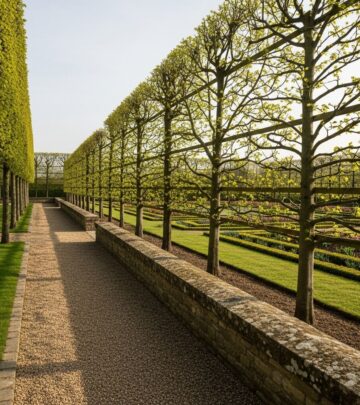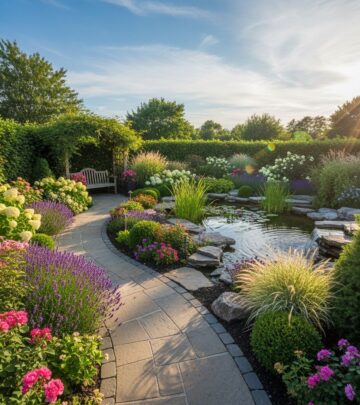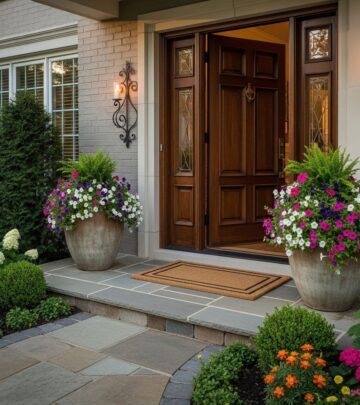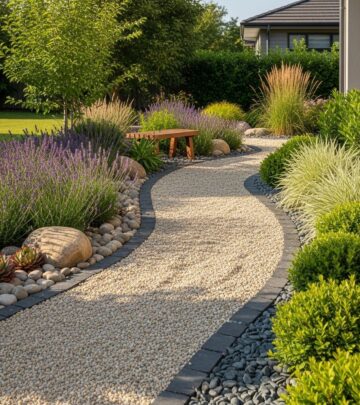Decomposed Granite Landscaping: Benefits, Types, Installation
Transform your outdoor spaces with this versatile, permeable, and cost-effective hardscaping material
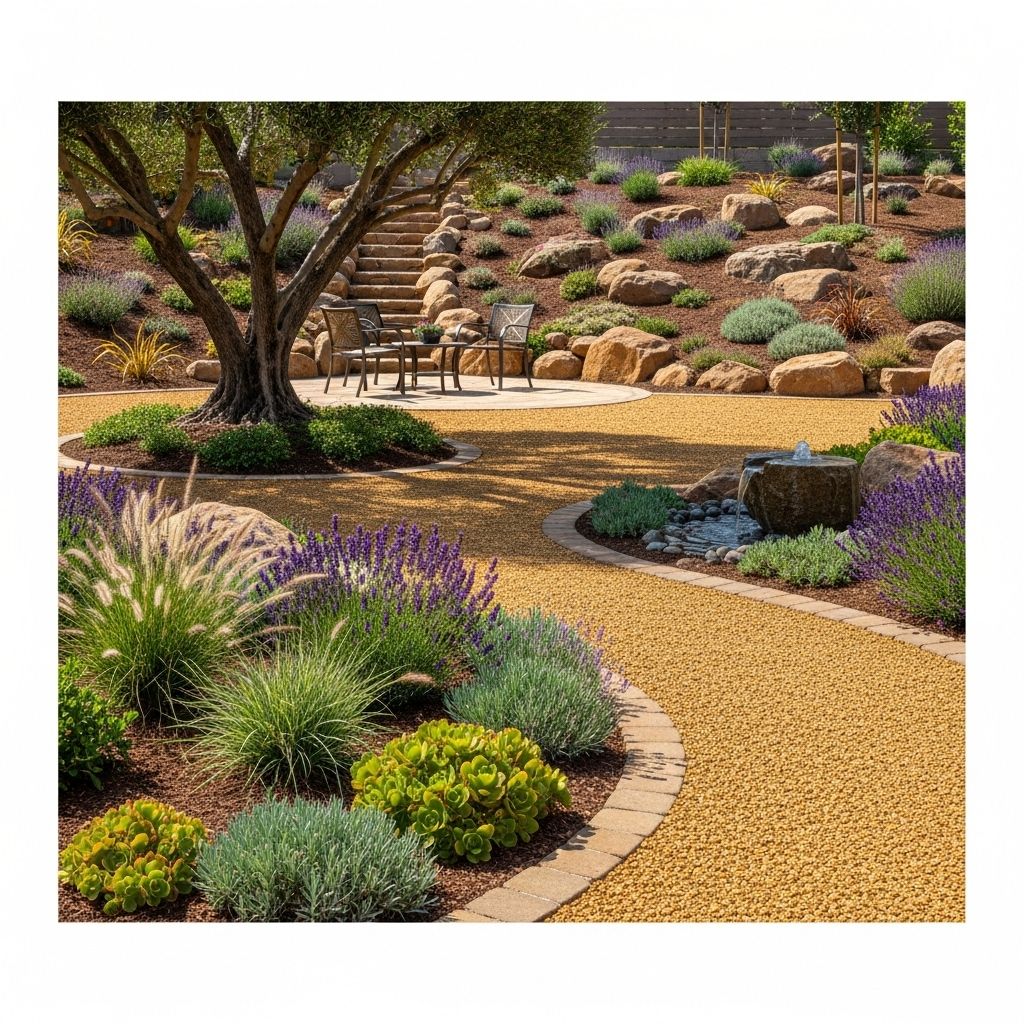
Image: HearthJunction Design Team
What Is Decomposed Granite?
Decomposed granite, commonly abbreviated as DG, is a naturally occurring material formed through the weathering and erosion of solid granite rock. Unlike traditional gravel, decomposed granite consists of finer particles—typically three-eighths-inch or smaller—some being no larger than a grain of sand. This unique composition gives DG its distinctive properties that make it an ideal choice for various hardscaping applications.
The natural formation process of decomposed granite begins with solid granite, a tough igneous rock that gradually breaks down over time due to environmental factors. This weathering creates the fine-grained material that retains many properties of its parent rock while offering enhanced usability for landscaping purposes.
One of the most appealing aspects of decomposed granite is its visual versatility. DG comes in a wide spectrum of colors, ranging from warm buff and brown tones to various shades of gray, black, red, and even green. This natural color palette allows DG to complement virtually any landscape design aesthetic, from contemporary to rustic.
Why Choose Decomposed Granite for Your Landscape?
Decomposed granite stands out as a superior hardscaping material for numerous reasons. Its combination of aesthetic appeal, functionality, and cost-effectiveness makes it an excellent choice for homeowners and landscape professionals alike.
Aesthetic Versatility
The natural appearance of decomposed granite brings an organic, earthy quality to any landscape. Its varied color options ensure compatibility with existing design elements, while its fine texture creates a visually pleasing surface that enhances outdoor spaces without overwhelming them. Whether used as a pathway material, patio surface, or decorative ground cover, DG maintains a subtle elegance that few other hardscaping materials can match.
Environmental Benefits
In an era of increasing environmental consciousness, decomposed granite offers significant ecological advantages. As a permeable material, it allows water to penetrate through to the soil below, reducing runoff and promoting natural groundwater recharge. This permeability helps mitigate flooding issues and contributes to sustainable water management practices in your landscape.
Additionally, decomposed granite is a natural material requiring minimal processing compared to manufactured alternatives like concrete or asphalt. This reduced processing translates to a lower carbon footprint and less environmental impact overall.
Practical Advantages
Beyond its aesthetic and environmental benefits, decomposed granite offers practical advantages that make it a sensible choice for many hardscaping projects:
- Cost-effectiveness: DG is remarkably affordable compared to many other hardscaping materials, allowing for beautiful landscape designs on a budget.
- Durability: When properly installed and maintained, decomposed granite creates a stable, long-lasting surface that can withstand various weather conditions.
- Low maintenance: DG requires minimal upkeep compared to other materials, saving time and resources over the long term.
- Versatility: From casual garden paths to formal driveways, decomposed granite adapts to numerous applications with ease.
Types of Decomposed Granite
Decomposed granite comes in several varieties, each offering specific benefits for different applications. Understanding these options helps ensure you select the right type for your particular project.
Natural Decomposed Granite
This is the most basic form of DG, consisting of the natural material without added stabilizers. Natural DG provides a permeable, informal surface ideal for garden paths, tree surrounds, and areas with light foot traffic. While the most affordable option, natural DG may require more frequent maintenance and replenishment, especially in regions with heavy rainfall or areas subject to erosion.
Stabilized Decomposed Granite
Stabilized DG incorporates a binding agent, typically a resin or polymer, that helps hold the granite particles together. This creates a more durable surface that resists erosion, minimizes dust, and stands up better to foot traffic. Stabilized DG maintains some permeability while offering enhanced stability, making it well-suited for pathways, patios, and seating areas that see regular use.
Resin-Coated Decomposed Granite
For applications requiring maximum durability, resin-coated DG provides a solution that approaches the stability of concrete while maintaining a more natural appearance. This premium option features granite particles thoroughly coated with resin, creating a highly stable surface suitable for driveways and high-traffic commercial areas. While less permeable than other types, resin-coated DG still allows some water penetration and offers superior longevity.
Popular Applications for Decomposed Granite
The versatility of decomposed granite makes it suitable for numerous landscaping applications, from purely functional to primarily decorative. Here are some of the most popular ways to incorporate DG into your outdoor spaces:
Pathways and Walkways
Perhaps the most common use for decomposed granite is creating garden paths and walkways. The material’s natural appearance complements gardens of all styles, from formal to wildly naturalistic. DG pathways provide stable footing while allowing water infiltration, reducing puddles and runoff. For residential pathways, a 2-3 inch layer of stabilized DG often provides the ideal balance of durability and natural aesthetic.
Patios and Seating Areas
Decomposed granite creates comfortable, affordable patio surfaces with a distinctly casual, natural feel. Unlike concrete or stone patios, DG patios blend seamlessly with surrounding landscape elements for a cohesive look. For seating areas, stabilized DG provides the necessary firmness for furniture placement while maintaining the material’s characteristic permeable properties.
Driveways
For driveways that balance functionality with environmental considerations, decomposed granite offers an attractive alternative to asphalt or concrete. Properly installed DG driveways feature deeper foundations (typically 4-6 inches) and may incorporate stabilizers or resin coatings for enhanced durability under vehicle weight. The permeable nature of DG driveways significantly reduces runoff compared to conventional paving materials.
Tree Surrounds and Plant Beds
Decomposed granite makes an excellent mulch alternative around trees and in plant beds. Its permeability allows water to reach plant roots while its weight and density discourage weed growth more effectively than organic mulches. The material’s natural coloration provides an attractive backdrop that highlights plant forms and foliage, creating visual interest even in dormant seasons.
How to Install Decomposed Granite
Proper installation is crucial for ensuring the long-term performance and appearance of decomposed granite surfaces. While specific techniques may vary depending on the application, the following step-by-step guide outlines the general process for installing DG in most residential settings.
Planning and Preparation
Before beginning any DG installation, careful planning sets the stage for success. Start by measuring the installation area accurately to calculate material needs. For most applications, you’ll require approximately 1 cubic yard of decomposed granite per 100 square feet at a 3-inch depth. Add an extra 10-15% to account for compaction and adjustments.
Next, evaluate the site conditions, including drainage patterns, sun exposure, and intended use. These factors will help determine whether natural, stabilized, or resin-coated DG is most appropriate for your project. Mark the installation boundaries clearly using stakes and string or marking paint.
Site Excavation
Proper excavation creates the foundation for a successful DG installation. Begin by removing all vegetation, rocks, roots, and debris from the marked area. For pathways and patios, excavate to a depth of 4-6 inches. Driveways and other high-traffic areas may require excavation of 6-8 inches to accommodate a stronger base layer.
Once excavated, grade the soil to create appropriate drainage. Most DG installations should have a slight slope (about 2%) away from buildings to prevent water accumulation. Compact the subsoil using a plate compactor to create a firm foundation for subsequent layers.
Installing Base Layers
A proper base enhances the stability and longevity of decomposed granite installations. For most applications, begin with a 2-3 inch layer of crushed stone or gravel spread evenly across the excavated area. This base layer improves drainage and provides structural support for the DG surface.
After spreading the base material, compact it thoroughly using a plate compactor, working in a consistent pattern to ensure uniform compression. For enhanced weed suppression, consider installing landscape fabric over the compacted base, overlapping seams by at least 6 inches and securing edges with landscape staples.
Applying Decomposed Granite
With the base prepared, it’s time to install the decomposed granite itself. Spread the DG evenly across the prepared area in layers of approximately 2-3 inches. For stabilized DG, follow the manufacturer’s instructions for mixing and applying the stabilizer product.
Using a rake, create an even surface with the desired contours and grades. Lightly mist the DG with water to help settle the material and control dust during the compaction process. Using a plate compactor, compress the material thoroughly, making multiple passes in different directions for optimal compaction.
For multi-layer applications, repeat the spreading, wetting, and compacting process until reaching the desired final thickness (typically 3-4 inches after compaction). The finished surface should feel firm underfoot but maintain a slight give that distinguishes it from harder paving materials.
Finishing Touches
Complete your DG installation with appropriate edging to contain the material and maintain clean boundaries. Options include metal edging, stone borders, brick edging, or concrete curbing, depending on your aesthetic preferences and budget considerations.
After installation, allow the surface to settle for 1-2 days before heavy use. For enhanced durability in stabilized applications, some contractors recommend a final application of stabilizer spray over the completed surface.
Maintenance and Care
While decomposed granite requires less maintenance than many other landscaping materials, proper care ensures its longevity and appearance. Regular maintenance practices help preserve the functionality and aesthetic appeal of DG installations.
Routine Maintenance
For day-to-day care, removing leaves, debris, and organic matter prevents decomposition that could affect the DG surface. A leaf blower on a low setting effectively clears debris without disturbing the granite particles. Address weeds promptly by hand-pulling or using targeted herbicide applications, being careful not to disturb the DG surface unnecessarily.
Periodic Refreshing
Over time, weather conditions and regular use may cause some erosion or compaction of decomposed granite surfaces. To refresh the appearance and functionality, rake the surface gently to loosen compacted areas, then add a thin layer of new DG material to restore the original level and appearance. Lightly water and compact the new material to integrate it with the existing surface.
For stabilized DG installations, apply refresher coats of stabilizer product according to the manufacturer’s recommended schedule, typically every 1-3 years depending on climate conditions and usage patterns.
Frequently Asked Questions
What is decomposed granite?
Decomposed granite is a type of finely graded granite that has weathered and eroded naturally over time. It consists of fine particles, some as small as sand grains, and comes in various natural colors including buff, brown, gray, black, red, and green.
Is decomposed granite permeable?
Yes, decomposed granite is naturally permeable, allowing water to filter through to the soil below. This permeability makes it an environmentally friendly choice that reduces runoff and supports natural water cycles. Even stabilized DG maintains some degree of permeability, though less than natural DG.
How long does decomposed granite last?
Properly installed decomposed granite can last 7-10 years or longer with appropriate maintenance. Factors affecting longevity include installation quality, climate conditions, usage patterns, and maintenance practices. Stabilized and resin-coated DG typically last longer than natural DG installations.
Can I install decomposed granite myself?
Yes, decomposed granite installation is achievable for experienced DIY homeowners, particularly for smaller projects like garden paths. However, larger applications like driveways or projects requiring precise grading may benefit from professional installation to ensure optimal performance and longevity.
How much does decomposed granite cost?
Decomposed granite is generally more affordable than many hardscaping alternatives. Material costs typically range from $40-$50 per cubic yard for natural DG, with stabilized and resin-coated varieties commanding higher prices. Installation costs vary based on project size, site preparation requirements, and regional labor rates.
References
- https://www.gardenista.com/posts/hardscaping-101-decomposed-granite/
- https://usrock.com/2024/11/19/the-ultimate-guide-to-using-decomposed-granite-dg-in-landscaping/
- https://skstonesusa.com/decomposed-granite/
- https://kndlandscaping.com/how-to-install-decomposed-granite/
- https://rosevillerocksupply.com/es/blog/using-decomposed-granite-for-landscaping-the-ultimate-guide
Read full bio of medha deb





